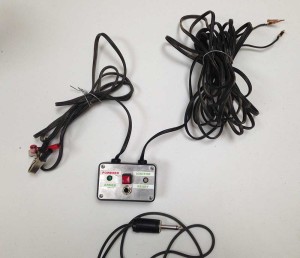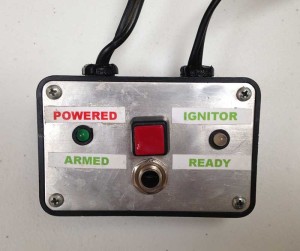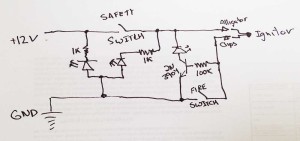A few years ago I built a launch controller for Estes type model rockets. This was designed to be powered by a 12 volt battery. I usually use a battery off a riding lawn mower or motorcycle. When I was a kid I used to use a motorcycle battery that had a bad cell to launch model rockets and it worked great.
This controller has two cables that are used to carry power from the battery to the ignitor.
This controller has the following features.
Now the reason for this post. The last time I used this controller, I did have a rocket launch imediately when I inserted the safety key. The LED that indicates that the ignitor is connected was designed to draw 10 milliamps through the ignitor and that current is flowing when the safety key is inserted. Though I tested that current through a number of ignitors, it must have been enough current to fire the one that went off prematurely. What I have decided to do was to substantially reduce the test current through the ignitor. The easiest way to do this was to use a smaller test current through the ignitor and use a transistor to amplify the current to a level high enough to light the indicator LED.
Here is modified schematic. By the way, don’t bug me about the LEDs which are shown connected backwards in this drawing.
With this design the test current through the ignitor can be roughly calculated as:
12 volts/100000 ohms = 120 micro amps
I think that this tiny current would be extremely unlikely to launch a rocket inadvertently. I measured the current through the LED as about 30 milliamps. This means the transistor is multipling the current by about 250 times.



